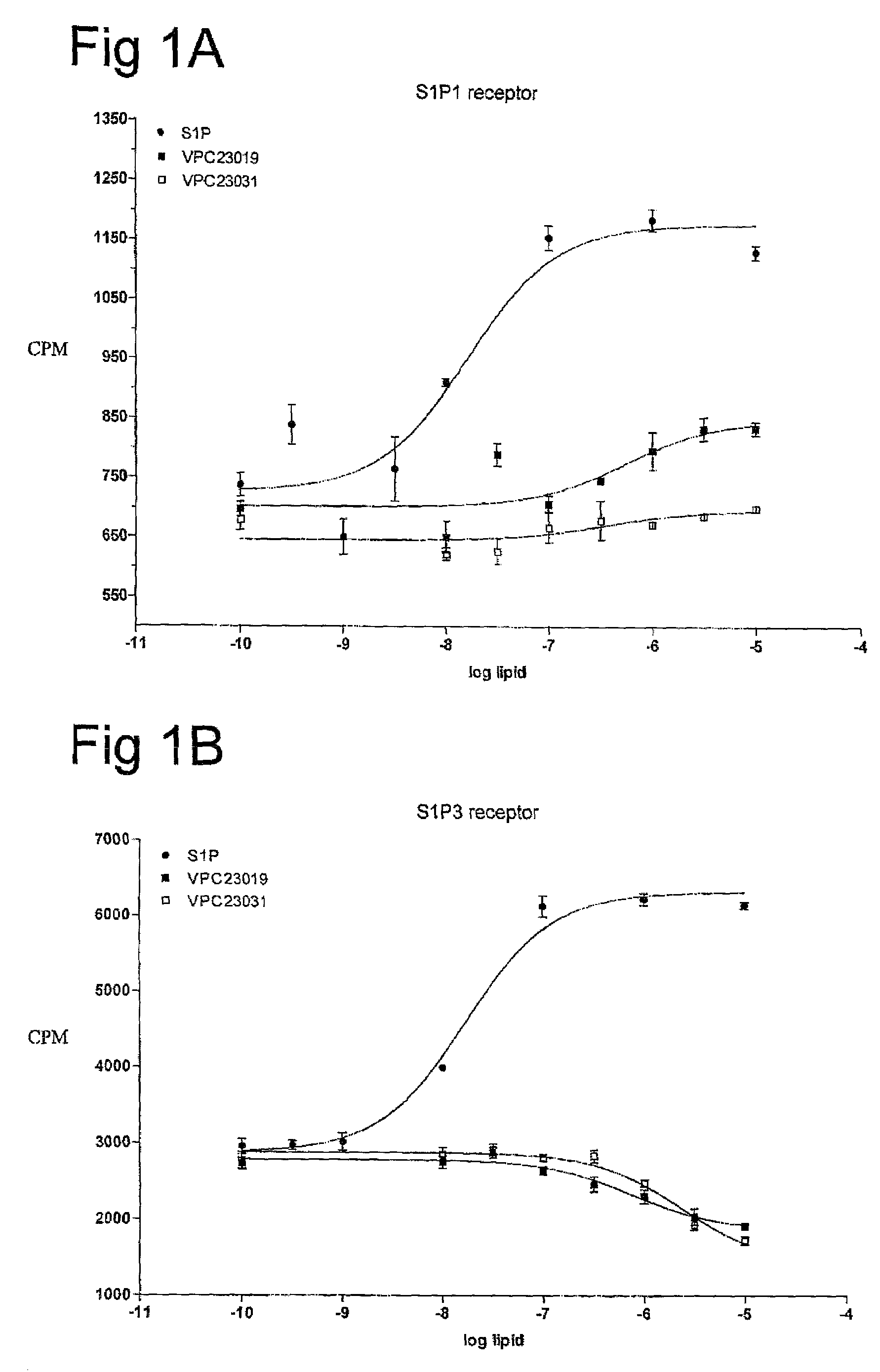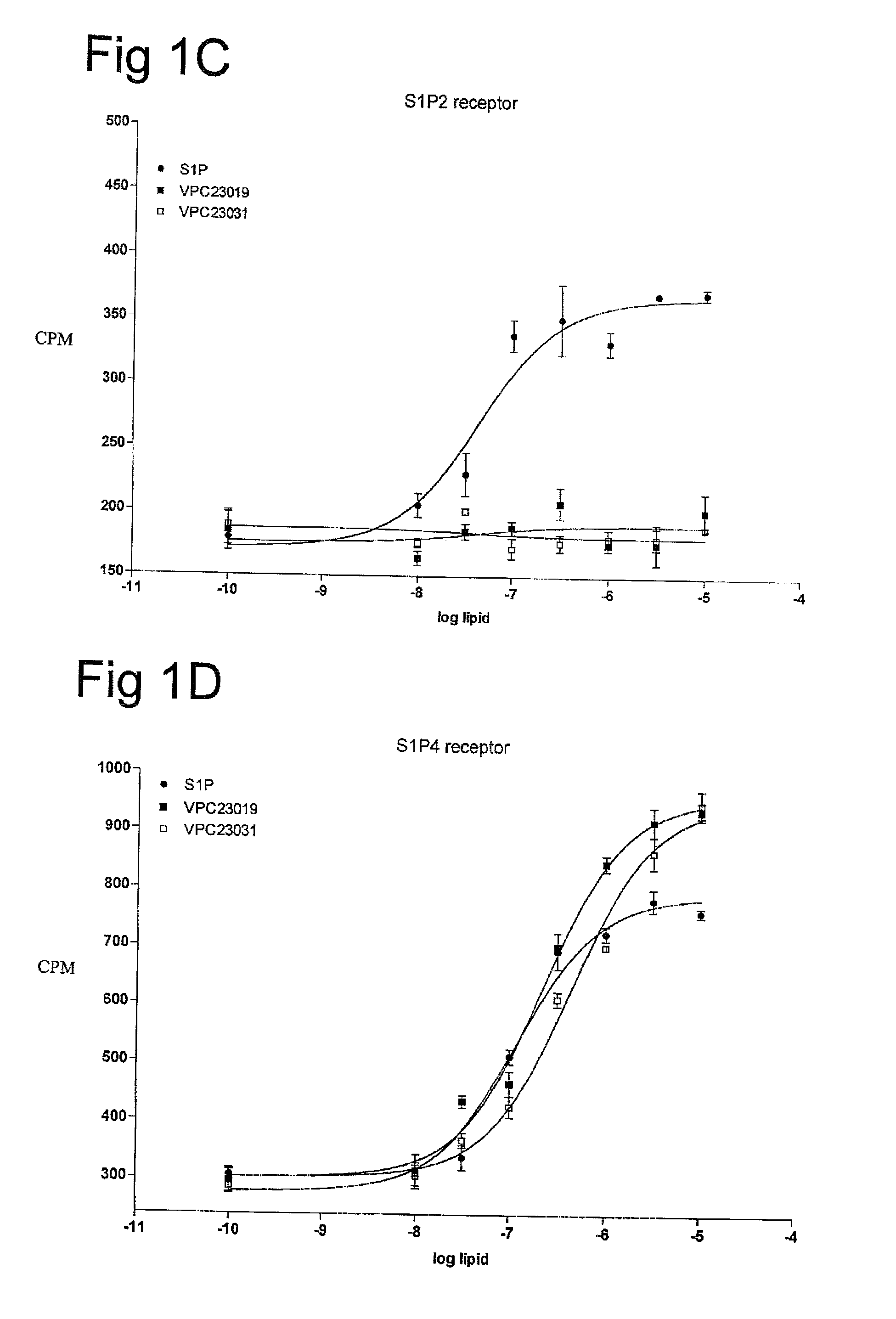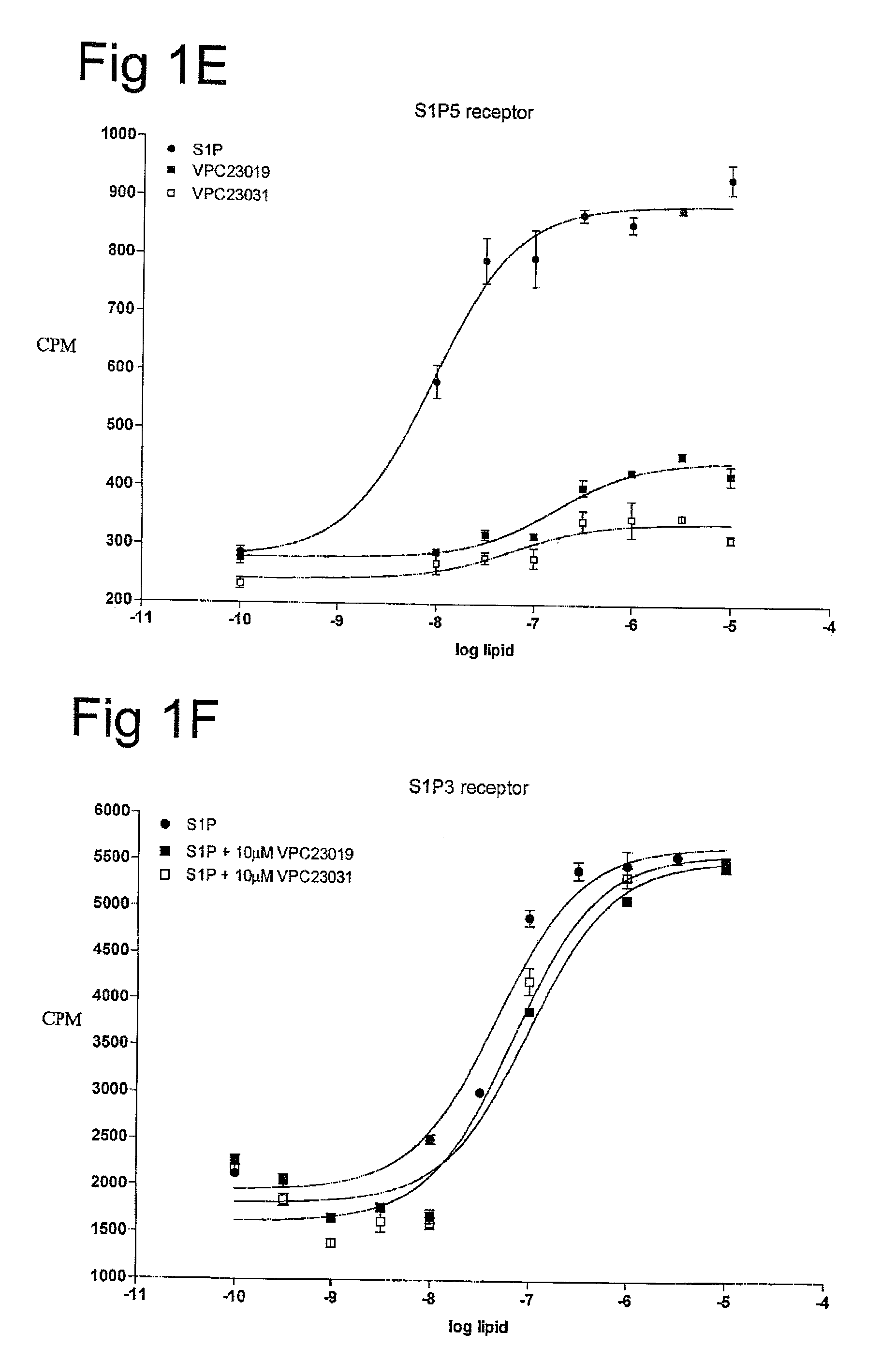Compounds active in sphingosine 1-phosphate signaling
a technology of sphingosine 1 and phosphate, which is applied in the direction of phosphorous compound active ingredients, drug compositions, biocides, etc., can solve the problems of limited isolation and characterization of s1p analogs that have potent agonist or antagonist activity for s1p receptors
- Summary
- Abstract
- Description
- Claims
- Application Information
AI Technical Summary
Problems solved by technology
Method used
Image
Examples
embodiments
[0059]One aspect of the present invention is directed to novel S1P analogs that have activity as modulators of S1P receptor activity. Modulators of S1P activity include agents that have either agonist or antagonist activity at the S1P receptor as well as analogs of those compounds that have been modified to resist enzymatic modification (i.e. block modification of the compounds by phosphohydrolases, sphingosine lyases or sphingosine kinases), or provide a suitable substrate for sphingosine kinases to convert an administered form into a more active form.
[0060]The structure of S1P can be described as a combination of three regions: the phosphate head group, the linker region, and the fatty acid tail. Through structure activity relationships (SAR) of the closely related lysophospholipid, lysophosphatidic acid (LPA), it has been determined that the presence of a phosphate head group is an important feature to allow binding of S1P to its S1P receptors. However, there are exceptions to th...
example 1
Chemical Syntheses of S1P Analogs
[0439]To develop good mimetics for S1P, a synthetic route was designed that had several aspects in mind (Scheme 1). First, butoxycarbonyl protected L-serine was chosen as starting material primarily because it retrosynthetically resembled the linker region of S1P. In addition, the starting material is a cheap and commercially available protected amino acid. Secondly, chemodivergence was taken into consideration. Coupling of the long chain was performed late in the synthesis so that several chain lengths could be prepared from a common intermediate. Another important issue to address was the overwhelming insolubility of the final compounds. Due to this insolubility, the target molecules could not be purified by chromatography or crystallization methods, nor could they tolerate a simple workup. It was therefore necessary to design a final step that quantitatively generated only the target product, and allowed for removal of excess reagents under vacuum...
example 2
[0552]All reactions for the synthetic schemes of Example 2 were accomplished using solvents purified by filtration through alumina (activity I) immediately prior to use. All reactions were performed under an inert atmosphere of nitrogen unless otherwise noted. All reagents were purchased from either Aldrich (Milwaukee, Wis.), Sigma (St. Louis, Mo.), Acros (Pittsburgh, Pa.), Advanced ChemTech (Louisville, Ky.), or Novabiochem (La Jolla, Calif.). Merck silica gel F-254 precoated, aluminum backed plates were used for thin layer chromatography (TLC) analysis. Analtech Silica Gel GF 500 or 1000 μm precoated, glass backed plates were used for preparative TLC. Silicycle Ultra Pure Silica Gel (230-400 mesh) or Fisher Scientific Silica Gel 60 Sorbent (230-400 mesh) was used for column chromatography. Each product was analyzed by TLC (single spot) and spectroscopic methods including 1H NMR, 13C NMR, and mass spectrometry. The nuclear magnetic resonance spectra were collected using a General E...
PUM
| Property | Measurement | Unit |
|---|---|---|
| pH | aaaaa | aaaaa |
| time | aaaaa | aaaaa |
| time | aaaaa | aaaaa |
Abstract
Description
Claims
Application Information
 Login to View More
Login to View More - R&D
- Intellectual Property
- Life Sciences
- Materials
- Tech Scout
- Unparalleled Data Quality
- Higher Quality Content
- 60% Fewer Hallucinations
Browse by: Latest US Patents, China's latest patents, Technical Efficacy Thesaurus, Application Domain, Technology Topic, Popular Technical Reports.
© 2025 PatSnap. All rights reserved.Legal|Privacy policy|Modern Slavery Act Transparency Statement|Sitemap|About US| Contact US: help@patsnap.com



